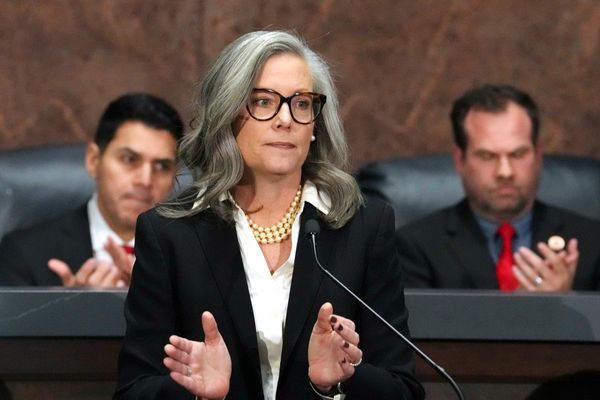
- The EV manufacturer earned a $110 million gross profit at its core automotive business in the fourth quarter, a milestone achievement for CEO RJ Scaringe. Whether he can maintain that going forward is up for debate.
Three years on from the launch of the R1T pickup, Rivian finally demonstrated it could earn more on the sale of its electric vehicles than what it costs to build them.
While Rivian has earned satisfied customers with its R1T truck and sibling R1S crossover, that is in part because the company was gifting customers more content than the company could actually afford. The pressure was on for founder and CEO RJ Scaringe to prove he is capable of managing the business profitably.
“In the fourth quarter of 2024 we hit an important milestone, achieving our first quarter of positive gross profit,” the company told investors on Thursday after publishing results following the close of trading.
Excluding operating expenses like overhead or research and development costs, Rivian’s core automotive operations swung to a $110 million gross profit for the period. That’s a significant improvement over the $611 million loss in the prior year’s fourth quarter.
While the business remains deeply in the red in part owing to operational expenditures of $831 million—roughly equivalent to half of its consolidated top-line revenue—it shows progress toward commercial viability.
The stock couldn’t benefit from the improvement, declining by over 3% to $13.14 a share in a challenging session that also saw heavy losses for direct competitors Tesla and Lucid. “We continue to remain confident in the long-term Rivian vision that is in the midst of massive transformation,” Wedbush tech analyst Dan Ives wrote, reaffirming his outperform rating and $20 price target.
Why its Q4 milestone was so important
Achieving a gross profit is not to be underestimated. Typically in the fixed-cost-heavy auto industry the greater you can scale the business, the higher the profits.
The problem with Rivian and many other EV startups has always been that they turned this axiom on its head: the more cars they hand over to customers, the bigger the losses. As long as its auto operations took in less revenue per vehicle sold than the cost to produce it, Rivian was incentivized to build as few electric vehicles as possible.
So while it might pride itself on the fact that 86% of its owners would happily buy another Rivian, the company was destroying value in the process. Without a clear path to profitability, shareholders were arguably better off had it shut its doors and liquidated its assets, just like fellow EV upstarts Nikola and Canoo recently did.
The question is whether Rivian’s improvement is actually sustainable—or more a case of simple window dressing. After all, Scaringe staked his credibility on finally eking out a Q4 gross profit, and it was hard to see how he could permit himself to fail.
Granted the CEO knew he could expect a sizable chunk of the improvement coming from a major overhaul of the R1 platform, when his team optimized the engineering of the two models and brought on new lower-cost suppliers.
But part of the boost came from a fluctuation in the sales mix toward more lucrative performance-oriented versions of the R1T and R1S that come equipped with three propulsion motors driving the front and rear axles instead of just two.
Furthermore over 90% of the $325 million in regulatory revenue was booked in the final period of the year as well. This business, in which EV companies sell credits to combustion engine rivals so the latter can be CO2 compliant, is effectively pure profit. Backloading it to the fourth quarter gave it an extra boost.
Questions remain on status of $6.6 billion federal loan awarded by Biden
Nonetheless the company said its milestone achievement wasn’t entirely an anomaly in danger of reverting back. “We expect to achieve a modest gross profit for the full year 2025,” Rivian noted. Importantly this wasn’t specific just to its automotive business but includes its software and services business, which benefits from its partnership with Volkswagen.
Finance chief Claire McDonough also said the forecast for Rivian was subject to a lot of policy uncertainty. These included effects from changing tariffs and any impact on demand from the potential loss of the $7,500 EV federal tax credit.
Pressed on the fate of a $6.6 billion federal loan from the Department of Energy closed in the final days of the Biden presidency, an evasive McDonough refused to answer the question directly and instead pitched the potential political benefits a growing Rivian would offer to the Trump White House.
“We’re really looking forward to working with the new administration and Department of Energy on our loan,” she told investors on Thursday’s call. “Our loan would enable 7,500 manufacturing jobs.”
Trump’s closest political ally is Tesla CEO Elon Musk, who also happens to run the former’s DOGE program to cut costs in the federal government. Should Rivian’s loan fall victim to DOGE, as previously threatened, it would directly benefit Musk.







